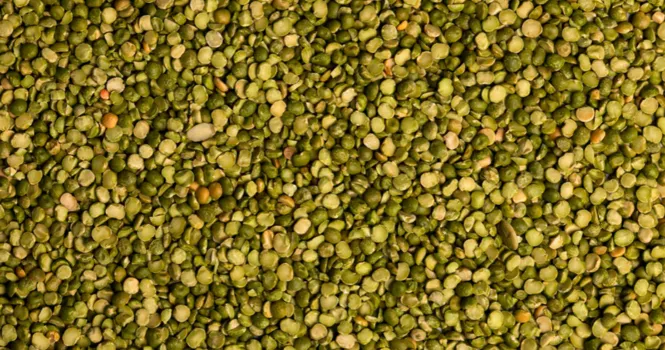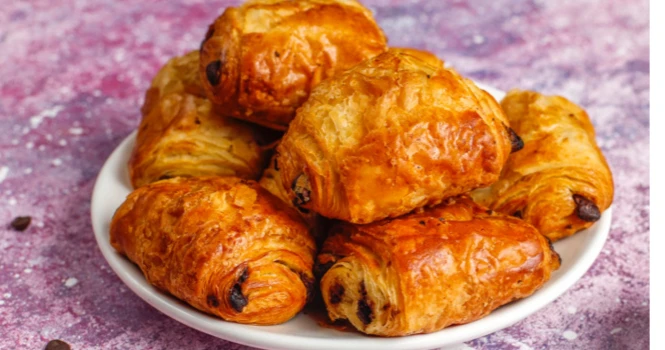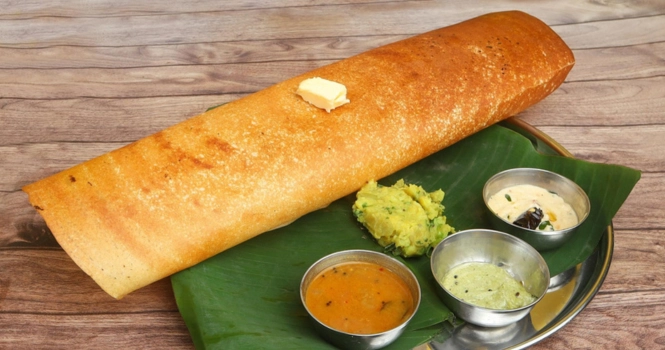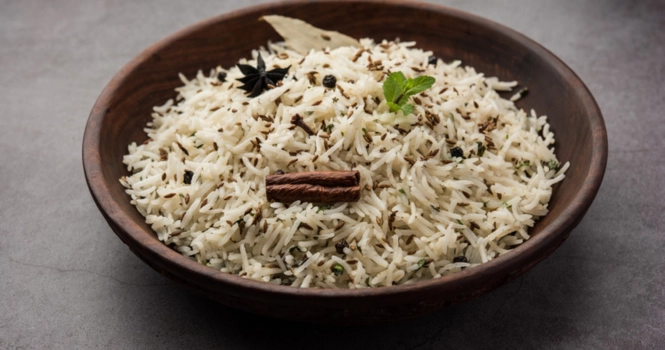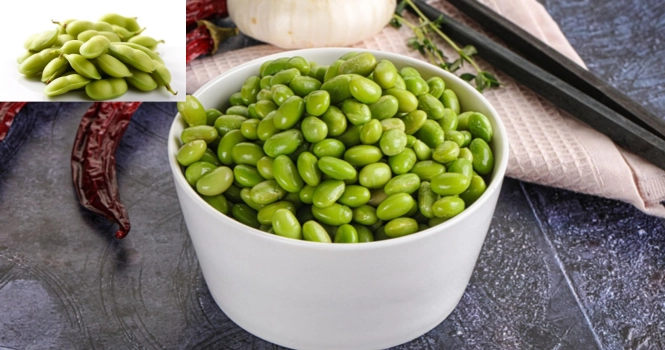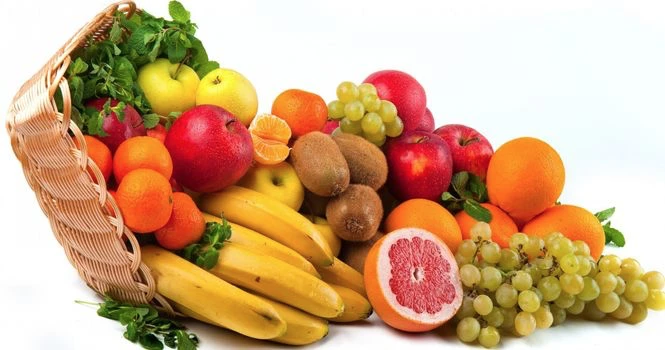Peanut Butter Benefits: Exploring Its Nutritional Power and Health Impacts

What are Peanuts?
Peanuts, also known as groundnuts or goobers, are a type of legume that originated in South America. Contrary to what their name might suggest, peanuts are not nuts; they belong to the family Fabaceae, which includes beans and lentils.
Peanuts grow in a very interesting manner. After the peanut flower is pollinated, the flower stalk elongates, driving what is called the “peg” (which will become the peanut pod) into the ground, where the peanuts mature.

Peanuts are widely grown in the tropical and subtropical regions and are important both for their edible seeds and the oil extracted from them. The seeds (or nuts) are rich in oil, protein, and fiber, and are a good source of various vitamins and minerals, making them a highly nutritious food.
Peanuts are consumed in many forms – they can be eaten raw or roasted, used in recipes, made into solvents and oils, used in makeup, medicines, textile materials, and peanut butter, of course. Peanut allergies are quite common and can cause severe reactions, so they are a significant concern in human health and food manufacturing.
Nutritional profile of raw peanuts per 100g, along with Recommended Daily Allowance (RDA) for adults.
| Nutrient | Amount | RDA (Adults) |
| Calories | 567 Kcal | 2000 – 2500 Kcal |
| Protein | 25.8 g | 46-56 g |
| Total Fat | 49.2 g | 44-77 g |
| – Saturated fat | 6.28 g | <22 g |
| – Monounsaturated fat | 24.43 g | N/A |
| – Polyunsaturated fat | 15.56 g | N/A |
| Carbohydrates | 16.1 g | 225-325 g |
| – Dietary Fiber | 8.5 g | 25-38 g |
| – Sugars | 4.7 g | <50 g |
| Sodium | 18 mg | <2300 mg |
| Potassium | 705 mg | 4700 mg |
| Calcium | 92 mg | 1000-1300 mg |
| Iron | 4.58 mg | 8-18 mg |
| Magnesium | 168 mg | 310-420 mg |
| Phosphorus | 376 mg | 700 mg |
| Zinc | 3.27 mg | 8-11 mg |
| Copper | 1.144 mg | 0.9 mg |
| Manganese | 1.934 mg | 1.8-2.3 mg |
| Selenium | 7.2 µg | 55 µg |
| Vitamin C | 0 mg | 75-90 mg |
| Thiamin (B1) | 0.640 mg | 1.1-1.2 mg |
| Riboflavin (B2) | 0.135 mg | 1.1-1.3 mg |
| Niacin (B3) | 12.066 mg | 14-16 mg |
| Pantothenic acid (B5) | 1.767 mg | 5 mg |
| Vitamin B6 | 0.348 mg | 1.3-1.7 mg |
| Folate (B9) | 240 µg | 400 µg |
| Vitamin E | 8.33 mg | 15 mg |
| Vitamin K | 0 µg | 75-120 µg |
Difference between Peanuts and Groundnuts?
Peanuts and groundnuts are actually two different terms used to refer to the same plant, Arachis hypogaea.
The term “peanut” is commonly used in North America and Australia, while “groundnut” is more commonly used in other English-speaking countries, such as the United Kingdom and India.
So, essentially, peanuts and groundnuts are the same thing, and the terms can be used interchangeably.
Peanut Allergies and How they Manifest?
Peanut allergy is one of the most common food allergies and can cause severe and potentially fatal allergic reactions. This allergy tends to be lifelong, although about 20% of individuals with peanut allergy might outgrow it.
When a person with a peanut allergy is exposed to peanuts, the immune system mistakenly identifies the proteins in peanuts as harmful and launches a defensive response. This reaction results in the release of chemicals like histamine, leading to various symptoms that can manifest in a few different ways, including:
1. Skin reactions:
These may include hives, redness, or swelling, often around the mouth and face but can occur anywhere on the body. There may also be eczema-like symptoms (itchy, reddened, and peeling skin conditions).
2. Gastrointestinal symptoms:
These can involve the digestive tract and may include nausea, vomiting, diarrhea, or abdominal pain.
3. Respiratory symptoms:
These might include a runny or congested nose, sneezing, coughing, wheezing, shortness of breath, or a feeling of tightness in the chest. There may also be symptoms related to the eyes and throat such as itchy, watery eyes and a sore or scratchy throat.
4. Cardiovascular symptoms:
These could include paleness, lightheadedness, fainting, or a drop in blood pressure.
5. Anaphylaxis:
In some cases, a person may experience a severe and potentially life-threatening allergic reaction called anaphylaxis. Symptoms can include difficulty breathing, swelling of the throat and tongue, a rapid pulse, dizziness, lightheadedness, or loss of consciousness. Anaphylaxis requires immediate medical attention and treatment with an emergency injection of adrenaline (epinephrine).
The severity of symptoms can vary from one individual to another and from one reaction to another. The onset of symptoms usually happens quickly, often within minutes of exposure to peanuts, although it can take up to two hours in some cases. Even a small amount of peanut protein can trigger an allergic reaction in susceptible individuals.
It’s important to remember that anyone with a known or suspected peanut allergy should seek advice from a medical professional, who can provide guidance on management strategies, including avoidance techniques, what to do in the event of an exposure, and whether to carry an epinephrine autoinjector (EpiPen) for emergency use. Discuss with your Doctor about it.
What is Peanut Butter?
Peanut butter is a popular food product made from ground dry roasted peanuts. It often contains additional ingredients that modify the taste or texture, such as salt, sweeteners, or emulsifiers.
Peanut butter is widely consumed in many countries, notably the United States, and is a staple in many households.
The consistency of peanut butter can vary from crunchy (or chunky), where peanut pieces are still present, to smooth (or creamy), where the butter is completely homogenized into a paste.
Peanut butter is a nutritious food that is high in protein, healthy fats, and vitamins and minerals. It contains monounsaturated fat, which can contribute to a healthy heart when consumed as part of a balanced diet. Peanut butter is also a good source of vitamins E and B6, niacin, magnesium, and manganese.
However, it’s also high in calories and should be eaten in moderation, especially if you’re watching your caloric intake. Additionally, many commercial brands add sugar and other ingredients, so it’s a good idea to read the labels and opt for natural or reduced-sugar versions if you’re concerned about added sugars.
Due to the prevalence of peanut allergies, peanut butter is often restricted in environments like schools and is also not suitable for individuals with this allergy.
Besides being a spread for toast or sandwiches, peanut butter is also used in a wide variety of cooking and baking recipes, including cookies, cakes, sauces, and many more.
Types of Peanut Butter
There are several types of peanut butter available in the market, differing mainly based on their ingredient composition and processing. Here are some common types:
1. Creamy Peanut Butter:
This is the most common type of peanut butter. It’s made by grinding peanuts into a smooth consistency. It’s spreadable and perfect for sandwiches, recipes, or straight from the jar.
2. Chunky or Crunchy Peanut Butter:
This type has bits of peanuts throughout, offering more texture compared to creamy peanut butter. Some people prefer this version because of the additional crunch it provides.
3. Natural Peanut Butter:
Natural peanut butter typically contains fewer ingredients, usually just peanuts and salt. Unlike other varieties, it often separates into solid and liquid parts, so you have to stir it before use. It usually doesn’t contain the added sugars and hydrogenated oils found in some other types of peanut butter.
4. Low-Fat Peanut Butter:
This is a version where some of the natural peanut oils are removed to reduce fat content. However, this often means the addition of more sugar or other fillers to maintain flavor and texture, so it’s not necessarily a healthier choice.
5. Sugar-Free or Low-Sugar Peanut Butter:
As the name suggests, these types have less or no added sugar. They can be a better choice for people watching their sugar intake. However, like low-fat versions, they may have other fillers or additives.
6. Powdered Peanut Butter:
This is a relatively new form of peanut butter. The peanuts are pressed to remove most of the oils, and then ground into a powder. You can rehydrate it with water to form a paste, or add it to smoothies or baking. This form has fewer calories and less fat than regular peanut butter, but also less of the healthy fats that make peanut butter beneficial.
7. Gourmet or Specialty Peanut Butter:
These can come in a wide variety of flavors and compositions, with additions like honey, chocolate, or other flavors. They also may use different types of peanuts or roasting processes for unique flavor profiles.
It’s important to read the labels when choosing a peanut butter to understand what it contains. Some brands add a significant amount of sugar, salt, or hydrogenated oils (to prevent the oil separating from the ground peanuts), which can reduce the health benefits associated with peanut butter.
Choosing a product with fewer additives is generally a healthier choice.
How to Prepare Peanut Butter?
Making homemade peanut butter is relatively easy and allows you to control the ingredients that go into it. Here’s a simple recipe:
Ingredients:
- 2 cups of unsalted roasted peanuts
- 1/2 to 1 teaspoon of salt (to taste)
- 1-2 tablespoons of honey or other sweeteners (optional)
- 1-2 tablespoons of peanut or vegetable oil (optional, for creamier texture)
Instructions:
- Place the peanuts in a food processor or high-powered blender.
- Process the peanuts until they become a fine paste. This usually takes about 1 to 2 minutes. Stop periodically to scrape down the sides of the container.
- Once the peanuts have broken down, you can add the salt, and if desired, the sweetener. Continue to process the mixture.
- If you want a creamier peanut butter, slowly drizzle in the oil while the food processor is running until you reach your desired consistency.
- Taste and adjust the salt or sweetener as needed.
- Transfer the homemade peanut butter to an airtight container and store it in the refrigerator. It should last for about 2 months.
Note: If you like chunky peanut butter, set aside some of the peanuts at the start. After you’ve made the smooth peanut butter, add the peanuts you set aside and pulse a few times to reach your desired consistency.
Making your own peanut butter can be healthier than store-bought versions because you can control the amount of salt and sugar added.
Plus, it doesn’t have any preservatives or other additives. However, homemade peanut butter doesn’t have the shelf life of commercial peanut butter, so it’s best to make it in small batches and keep it refrigerated.
Does Peanut Butter Contribute to Weight Loss in a Healthy Manner?
Peanut butter can be part of a healthy diet that promotes weight loss, but it should be consumed in moderation due to its high calorie and fat content.
Here are a few reasons why peanut butter can support a weight loss plan:
1. High in Protein: Peanut butter is rich in protein, a macronutrient that supports feelings of fullness and can help reduce appetite. This can lead to a natural reduction in calorie intake.
2. Good Source of Healthy Fats: The monounsaturated and polyunsaturated fats in peanut butter can help you feel satisfied and full, potentially curbing overeating.
3. Fiber Content: Peanut butter contains dietary fiber, which can promote a healthy digestive system and increase feelings of fullness.
However, it’s essential to keep portion sizes in check. Peanut butter is calorie-dense, meaning it provides a large number of calories in a small volume.
Just two tablespoons typically contain around 180-200 calories, and it’s easy to consume more than the serving size if you’re not careful.
When incorporating peanut butter into a weight loss plan, be mindful of the following:
- Watch portion sizes: Measure out your serving size to avoid consuming more calories than you intend.
- Choose a healthy variety: Some peanut butter brands add sugar or other unnecessary ingredients. Opt for natural peanut butter without added sugar or hydrogenated oils.
- Balance with other foods: Pair peanut butter with nutritious whole foods like whole grain bread, apples, or celery. Avoid combining it with high-sugar or high-calorie foods.
As with all foods, peanut butter should be consumed as part of a balanced, nutrient-dense diet. As always, it’s a good idea to consult with a registered dietitian or a healthcare professional for personalized advice about your diet and weight loss goals.
Ways to Consume Peanut Butter
Peanut butter is incredibly versatile and can be incorporated into meals and snacks in a variety of ways. Here are some ideas:
1. Spread on Whole Grain Toast: This is a classic way to enjoy peanut butter, often with a drizzle of honey, a sprinkle of cinnamon, or a layer of jam or sliced bananas on top.
2. Smoothies: Adding a spoonful of peanut butter to your smoothies can add creaminess and boost protein content. It pairs well with ingredients like bananas, berries, spinach, oats, and protein powder.
3. Oatmeal: Stir some peanut butter into your morning oatmeal for a rich, creamy texture and added protein.
4. PB&J Sandwich: This is a traditional American sandwich made with peanut butter and jelly or jam.
5. Dips and Sauces: Peanut butter can be used to make sauces and dips for dishes like spring rolls, satay, or salads. It’s a common ingredient in many Asian cuisine recipes.
6. Baking: Peanut butter is a delicious addition to cookies, brownies, cakes, and other baked goods.
7. Stir-Fries: Some stir-fry recipes call for a spoonful of peanut butter to enrich the sauce.
8. Energy Balls: These are quick, no-bake snacks made from ingredients like oats, dried fruit, chia seeds, and, of course, peanut butter.
9. With Fruits or Vegetables: Peanut butter pairs well with many fruits and veggies. Try it with apple slices, celery sticks, or bananas for a healthy snack.
10. Yogurt and Granola: Add a dollop of peanut butter to your yogurt and top with granola for a satisfying crunch and added protein.
Remember, even though peanut butter has many health benefits, it is high in calories and should be consumed in moderation. It’s important to measure out your servings to ensure you’re not consuming more than you realize.
Frequently Asked Questions
Is It Good to Eat Peanut Butter Everyday?
Yes, it can be healthy to eat peanut butter every day as long as you consume it in moderation due to its high calorie content.
Peanut butter is rich in healthy fats, protein, fiber, and various vitamins and minerals, making it a nutritious addition to your diet.
What Does Peanut Butter Do to Your Body?
Peanut butter provides many nutritional benefits. It can help you feel full longer due to its protein and fiber content, which can assist with weight management.
It’s also rich in heart-healthy monounsaturated fats. Additionally, peanut butter contains essential vitamins and minerals such as magnesium, potassium, and vitamin E.
Is Peanut Butter Good for Your Skin?
Peanut butter contains vitamins E and C, as well as beta-sitosterol, a plant sterol that may have skin benefits.
However, consuming peanut butter for skin health benefits is not as direct or efficient as using skin care products that contain these ingredients. If you have a peanut allergy, it could cause a skin reaction.
What Are the Benefits of Peanut Butter for Weight?
Peanut butter can contribute to weight management due to its high protein and fiber content, both of which can keep you feeling satisfied and full, reducing the likelihood of overeating.
However, it’s high in calories, so portion control is key.
What Are 3 Benefits of Eating Peanut Butter?
Three benefits of eating peanut butter include:
1. Provides high-quality protein necessary for muscle growth and repair.
2. Contains heart-healthy fats which can support cardiovascular health.
3. Provides fiber, which supports digestive health and can keep you feeling full longer.
Which Peanut Butter Is Best?
The best peanut butter is generally one with the fewest additives. Look for peanut butter with minimal ingredients—ideally just peanuts and perhaps a bit of salt.
Avoid brands with added sugars, hydrogenated oils, or other unnecessary ingredients.
When Should I Eat Peanut Butter?
You can eat peanut butter anytime during the day based on your dietary needs and preferences. It can be a part of your breakfast, included in your lunch, used as a dip for a midday snack, or added to your dinner recipes.
Can We Eat Peanut Butter on an Empty Stomach?
Yes, it’s generally fine to eat peanut butter on an empty stomach. In fact, eating peanut butter in the morning, with its protein and healthy fats, can provide a source of sustained energy.
When Should I Avoid Peanut Butter in a Day?
There isn’t a specific time of day when you should avoid peanut butter. However, because it is high in calories, you should avoid eating large amounts of it just before bed, especially if you’re trying to manage your weight.
Does Peanut Butter Help Hair Growth?
While peanut butter does contain nutrients such as protein, which is important for hair health, and other nutrients like biotin, which can support hair growth, there’s no scientific evidence to suggest that consuming peanut butter will directly promote hair growth.
As always, maintaining overall nutritional balance is important for all aspects of health, including hair health.
Can We Apply Peanuts on Face?
Yes, peanuts can be used in face masks due to their nutrient content, including vitamins E and B6, niacin, and proteins.
However, be aware that peanut allergies are common, so you should avoid this if you’re allergic. It’s always a good idea to do a patch test on a small area of your skin before applying it to your face.
Can We Eat Peanut Butter with Milk?
Absolutely! Peanut butter and milk can be combined in a variety of ways. You might stir a spoonful of peanut butter into a glass of warm milk, add both to a smoothie, or even just enjoy a spoonful of peanut butter with a glass of milk on the side.
What Can I Eat Peanut Butter with?
Peanut butter is incredibly versatile. It can be spread on toast, apples, or bananas; blended into smoothies; used in baking; stirred into oatmeal or yogurt; or even used in savory sauces for dishes like stir fries or noodles.
Can Peanut Butter Burn Fat?
Peanut butter itself doesn’t burn fat, but it can help support weight management due to its high protein and fiber content, both of which can keep you feeling satisfied and full, reducing the likelihood of overeating.
However, it’s high in calories, so portion control is key.
What Is Peanut Butter Made Of?
The primary ingredient in peanut butter is ground peanuts. Depending on the brand and type, it may also contain added oils, sugar, salt, or preservatives.
Natural or pure peanut butter usually contains just peanuts and maybe a bit of salt.
Why Is Peanut Butter So Tasty?
The taste appeal of peanut butter can be attributed to its creamy texture and rich, nutty flavor. It also has a pleasant balance of sweet and salty tastes.
The roasting process, which brings out the natural sugars in peanuts, also adds to its deliciousness.
How Much Peanut Butter Should I Eat a Day?
A standard serving of peanut butter is two tablespoons, which provides around 190 calories. However, the right amount for you depends on your specific calorie needs and dietary goals.
Remember 1 Tablespoon is equal to 3 Teaspoons;
( 1 Teaspoon = 3 ml ; 1 Tablespoon = 15 ml)
Is Peanut Butter Good for Cholesterol?
Yes, peanut butter contains heart-healthy monounsaturated and polyunsaturated fats that can help lower bad cholesterol levels (LDL) and increase good cholesterol levels (HDL).
How to Eat Peanut Butter?
You can eat peanut butter in a variety of ways. It can be spread on toast or added to smoothies, oatmeal, yogurt, or baking recipes.
It can also be eaten with fruits like apples or bananas or with vegetables like celery. Some people even enjoy a spoonful straight from the jar! The key is to enjoy it in moderation due to its high calorie content.
![]()



